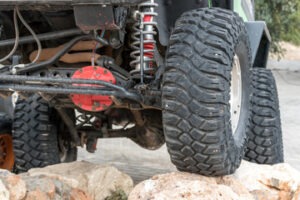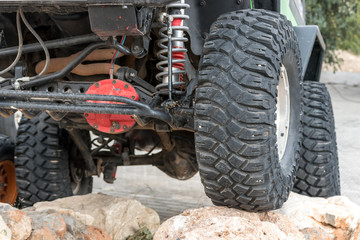Jeeps are known for being tough and versatile, but like any vehicle, they will need to have certain parts replaced from time to time. If you are looking for genuine OEM Mopar Jeep Parts Woodhouse Chrysler Dodge Jeep (r) RAM of Blair has you covered.
Winch: A reliable winch can come in handy if you get stuck on the trails or even on the road. Get a model that can pull up to 9500 pounds for extra peace of mind.
A radiator is a crucial part of your vehicle’s cooling system. It keeps your engine from overheating by transferring heat away from the motor. The radiator does this by circulating coolant through the engine to absorb heat and then back through your radiator, where it releases the thermal energy into the air around it.
Your Jeep’s radiator works with other parts of the cooling system to keep your engine running at an optimal temperature. The other important parts include the radiator hoses, the pressure cap, and the inlet and outlet tanks (also called the expansion tank and the coolant overflow bottle).
The radiator is located at the front of your Jeep’s engine bay. It features a large metal core with rows of thin cooling fins. The radiator also has tubes through which the coolant flows. It is held up by a frame that attaches to the radiator core support and a set of brackets at the top. A radiator is also equipped with a pressure cap to help seal the cooling system and maintain pressure in the coolant so it doesn’t boil, which makes your car’s radiator more efficient.
When your engine is working hard, it produces a lot of heat from burning fuel and moving components. This heat needs to be vented out of the engine in order to prevent damage to the motor, so coolant carries waste heat away from the engine. The coolant is pumped through channels in the engine block and heads, where it picks up excess heat. The coolant then passes through the radiator, where it gets cooled by the airflow that blows over the fins. The cooled coolant returns to the radiator and repeats the process over and over again.
A damaged radiator can leak, which reduces the amount of coolant available to the engine and causes it to overheat. If you suspect that your radiator is damaged, it’s important to have the repairs done as soon as possible. A trained professional can inspect your Jeep’s radiator to make sure it is functioning properly. They can also replace the coolant with a newer, better-quality formula so that your engine doesn’t overheat again in the future.
Alternator
The alternator is a key component of your Jeep’s charging system. This important automotive part is responsible for recharging your battery and powering all electrical accessories while the car is running. It gets its name from the alternating current it generates. It takes mechanical energy from the engine’s crankshaft and converts it into electricity.
Inside your alternator, you’ll find a rotor with magnets and a stationary armature that has conductive copper wiring. The rotor spins as the belt turns, creating the alternating current that charges your battery and powers all your accessories.
A faulty or worn-out alternator can cause your car to lose power. The voltage of the battery will drop, and you may notice that your headlights or other electrical accessories are dimming. The certified service team at Northwest Chrysler Jeep Dodge Ram can help you determine if the problem is with your battery or alternator.
Your alternator is a powerful yet delicate component. It is exposed to a lot of stress on a regular basis. The constant generation of power, the size of your engine, and the use of electronic accessories all impact its lifespan. This is why it’s crucial to keep up with routine maintenance and repairs.
If you notice your alternator is acting up, it’s time to replace it. Our expert technicians will install a high-quality replacement that keeps you rolling down the road.
We also carry a wide variety of other components for your charging and starting system. From fuses to relays and voltage regulators, you’ll find the parts you need to keep your vehicle running like new.
If your alternator is not working correctly, the symptoms are easy to spot. It can include an illuminated battery light, a battery that drains quickly, or the radio refusing to turn on. Jump-starting the engine with a battery charger will give you a good idea of whether the issue is the battery or alternator. If the battery is fine and the alternator seems to be the culprit, it’s best to schedule a charging and starting system test. Your mechanic can diagnose the problem with a simple test that costs from $30 to $50.
Air conditioning compressor
One of the most important parts of your Jeep’s air conditioning system is the compressor. It’s located in your vehicle’s outdoor air conditioning unit, along with the condenser coil and fan. The compressor is responsible for absorbing the hot air from inside your car and transforming it into cool air.
It does this by compressing refrigerant gas and then transporting it to other AC system components. Your car’s engine propels the compressor through a belt system. The compressor clutch allows the compressor to engage when you turn on your AC controls and disengage when the system is turned off.
Inside the compressor, there are pistons that move up and down as they compress the refrigerant. The compressor also has a bunch of internal valves that open and close as it cycles through. The compressor must be lubricated with a thin layer of oil. It’s this lubrication that allows the compressor to function correctly.
When the compressor malfunctions, you may notice that your air conditioner isn’t working. Your Jeep’s compressor can fail gradually, or you might experience a sudden failure. One of the most common signs of a failing compressor is warm air coming out of your vents.
Most automotive AC compressors are made from cast aluminum and feature a sealed bearing. While they’re not as durable as other automotive parts, they can last a long time if properly cared for. The compressor’s lifespan can be extended by having it activated periodically between November and February.
If you’re replacing your Jeep’s compressor, be sure to make careful notes about the connections and wiring. This will help ensure you install the new compressor with minimal headaches. In addition, you can avoid a lot of potential mistakes by taking several pictures of your old compressor from different angles. You can then use these pictures as a reference when installing your new compressor. If you’re unsure of how to do this, ask an expert at your local NAPA store for assistance. This will save you time and money. They’ll be able to quickly diagnose the problem and recommend the best solution.
Battery
The battery of your 2022 Jeep is a critical component in your vehicle’s start-up. It sends power to the electric starter in order to activate and start your engine. The battery is a rechargeable unit that typically resembles a cube with two terminals at the top and a plastic casing around it. It is important to understand how the battery works in order to recognize signs of a failing one.
Jeeps have a reputation for being tough and capable vehicles that can overcome a wide range of terrain and conditions. One of the secrets to their legendary performance is a powerful and reliable battery that can withstand many tasks, including driving long distances, off-roading, and towing trailers. In fact, you’ve probably heard that Jeeps use a dual battery system instead of the single battery many cars use. This dual battery system helps to distribute the power load more evenly, ensuring that all functions within your Jeep can receive what they need.
When it comes to your battery, the most common signs of a bad or dying one include a slow cranking time when you turn the key in the ignition, a warning light that lights up when you’re attempting to drive, or corrosion on the terminals. If you experience any of these issues, it’s best to schedule a service appointment at Kahlo Chrysler Dodge Jeep Ram to have your battery checked and replaced if necessary.
Aside from its size and power, the battery also has a date code that shows the date of its manufacturing. Depending on the weather, type of car, and battery size, a typical car battery will last between 3 and 5 years.
To replace your car battery, you’ll want to remove the positive (red) cable first by twisting and pulling; do not use substantial force or metal objects as this can damage the terminals. Then, find the clamp that holds the battery in place and carefully remove it. Once the old battery is removed, you’ll need to clean the battery tray and terminals before installing the new one.

